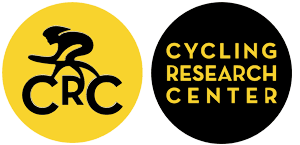Application of an Innovative W' Model in Practice: Optimizing the Pacing Strategy in Elite Track Cycling
Keywords:
Critical Power concept, W' balance, Track Cycling, Team Pursuit, MadisonAbstract
Since more than 50 years, the 'Critical Power' model provides a robust mathematical and physiological framework to study human exercise capacity and fatigue development. This concept is built upon Critical power (CP), an estimate of the maximal metabolic steady-state intensity, and W', a finite anaerobic work capacity above CP. Only recently, it has been applied to intermittent exercise, in which high-intensity exercise (i.e., above CP) is alternated with low-intensity intervals (i.e., below CP). In essence, the application of the CP model to intermittent exercise allows for the prediction of an individual's acute energy balance at any time during exercise. For a broad spectrum of people within sports and clinical practice, the practical relevance of having access to this information is great (e.g., to make strategic decisions or improve pacing strategies during races, or to individualize training sessions). Although these field applications are very promising, the predictive capabilities of current models are limited as they do not account well for the specific modalities of different exercise protocols, are not tailored to the individual, and lack fundamental knowledge about the underlying physiological processes. Recently, we developed a new evidence-based model that enables real-time monitoring of W' during exercise. During this presentation, we will go deeper into the scientific background of the model, and we will illustrate its practical use in elite track cycling.
Downloads
Published
How to Cite
Issue
Section
Copyright (c) 2024 Journal of Science and Cycling

This work is licensed under a Creative Commons Attribution-NonCommercial-NoDerivatives 4.0 International License.
Authors contributing to Journal of Science and Cycling agree to publish their articles under a Creative Commons CC BY-NC-ND license, allowing third parties to copy and redistribute the material in any medium or format, and to remix, transform, and build upon the material, for any purpose, even commercially, under the condition that appropriate credit is given, that a link to the license is provided, and that you indicate if changes were made. You may do so in any reasonable manner, but not in any way that suggests the licensor endorses you or your use.
Authors retain copyright of their work, with first publication rights granted to Cycling Research Center.






